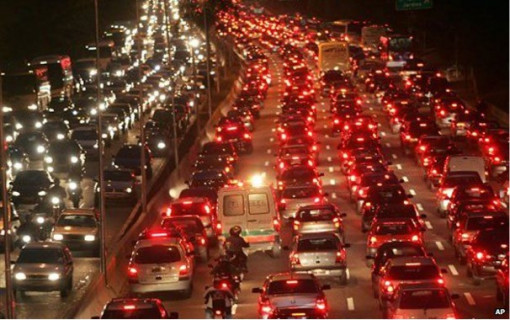How far are we from large-scale use of 'self-driving' cars. This and subsequent posts deal with this question. In answering it, I will focus on the potential contribution of self-driving cars to the quality of the living environment. Nowadays, the development of self-driving cars has faded a bit into the background. There is a reason for that, and I will get to it later.
When 'self-driving' vehicles first emerged, many believed that a new urban utopia was within reach. This would save millions of lives and contribute to a more livable environment. However, it is only one of the scenarios. Dan Sperling writes: The dream scenario could yield enormous public and private benefits, including greater freedom of choice, greater affordability and accessibility, and healthier, more livable cities, along with reduced greenhouse gas emissions. The nightmare scenario could lead to even further urban expansion, energy consumption, greenhouse gas emissions and unhealthy cities and people.
The dream scenario
Do you have to go somewhere? On request, a self-driving car will stop in front of your door within a few minutes to make the desired journey. After you have been safely dropped, the car drives to the next destination. Until a few years ago, companies like Uber and Lync were looking forward to the day when they could fire all their drivers and offer their services with 'self-driving' cars. Naturally at lower prices, which would multiply their customer base. In this scenario, no one wants to have their own car anymore, right? The number of road casualties also will reduce drastically in this scenario. Autonomous cars do not drink, do not drive too fast, never get tired and anticipate unexpected actions of other road users much faster than human drivers. At least that was the argument.
Quick calculations by the proponents of this scenario show that the number of cars needed for passenger transport could decrease by a factor of 20 (!).
The nightmare scenario
This calculation was perhaps a little too fast: Its validity depends on a perfect distribution of all trips over day and night and over the urban space and on the presence of other road users. What you don't want to think about is that outside rush hour, most of the fleet of 'self-driving' cars is stationary somewhere or driving aimlessly in circles. Moreover, the dream scenario assumes that no one switches from public transport, walking, or cycling. Instead of improving cities, these types of cars have the potential to ruin them even further, according to Robin Chase, co-founder of Zipcar. Taxis, especially those from Uber and Lyft, are already contributing to traffic jams in major American cities and to the erosion of public transportation
Both views are based on suspicions, expectations, and extrapolations and a dose of 'wishful thinking' too. In the next posts, I will discuss results of scientific research that allows to form a more informed opinion about both scenarios.
Dit you already visit my new website 'Expeditie Muziek'. This week an exploration of world-class singer-songwriter 'Shania Twain






Low-cost, safe, high-speed, self-driving cars are a hoped-for solution for connecting everyone in suburban sprawl cities, where today owning and operating a car is a necessity - not a choice. Safe, self-riding high-speed trains are a reality that connects people without being dependent on owning and operating a costly car. Self-riding high-speed trains and connecting local self-riding rail and bus transit, operating in high-density cities, offers the possibility for a family to increase wealth by $25 million or more over a lifetime by investing money saved from driving in a low-risk investment fund.